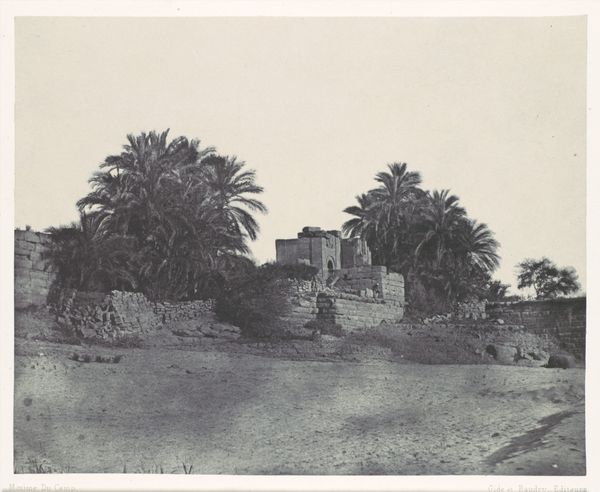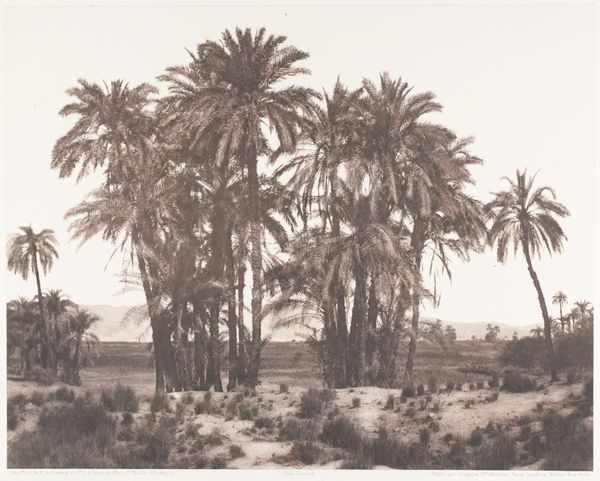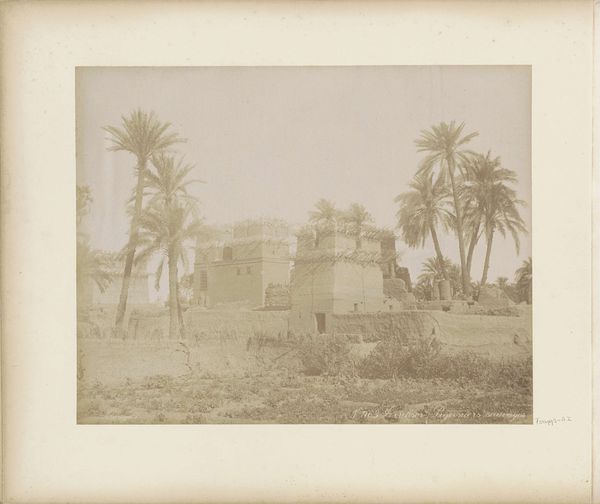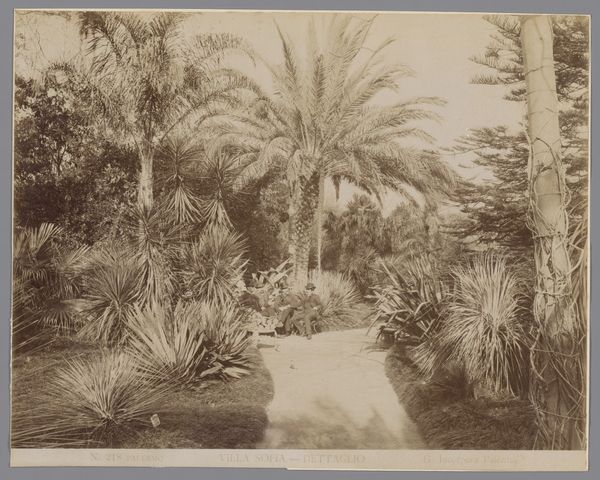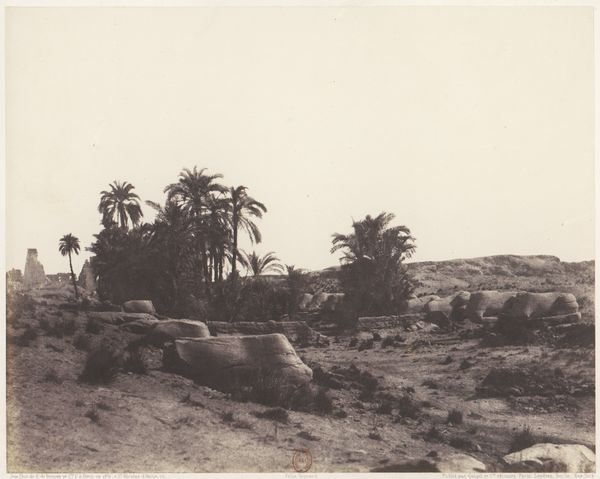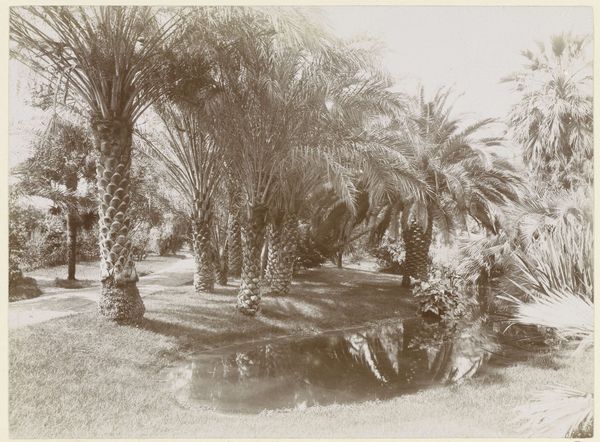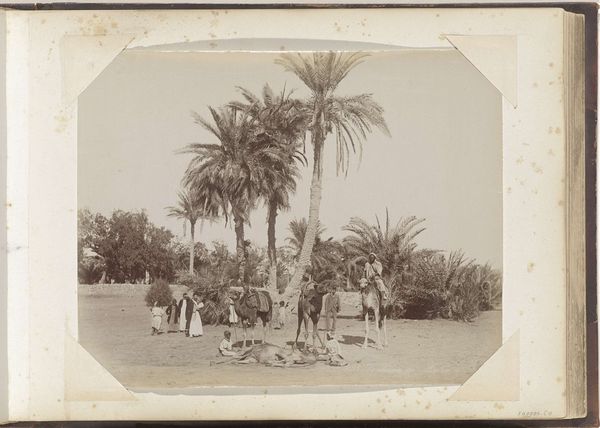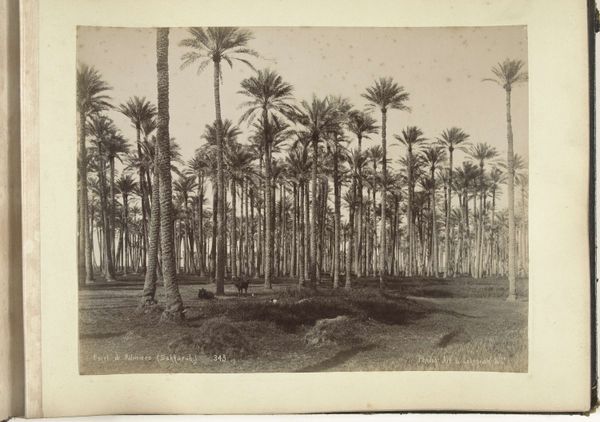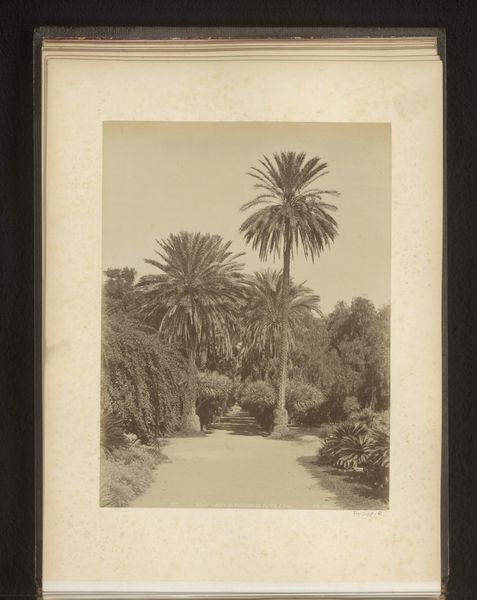
Dimensions: 19.5 24.8
Copyright: Public Domain
Editor: This albumen print, titled "Pincian Garden, Rome," was taken between 1853 and 1856 by Jane Martha St. John. It’s currently at the Metropolitan Museum of Art. I am struck by the contrast of textures and the overall stillness of the scene. How do you interpret this work? Curator: It's more than just a pretty landscape. Consider the context: St. John was a woman artist during a period when photography was rapidly developing, yet professional opportunities were limited for women. This image becomes a statement about access, about a woman claiming her space and vision in a world dominated by men in artistic fields. Editor: That's a powerful point. So the garden itself becomes almost a symbolic territory? Curator: Precisely. The Pincian Garden, a public space, transformed into St. John’s personal canvas. The composition, dominated by exotic plants, invites questions of colonialism and the visual consumption of 'other' cultures. What’s present? And, perhaps more importantly, what’s been omitted? What kind of gaze does she bring, and what does that say about Victorian society? Editor: I see what you mean. It's easy to see it simply as a romantic scene, but there's a whole layer of socio-political meaning beneath the surface. Curator: Absolutely. Her choice of subject and medium opens dialogues about gender, class, and the romanticization of the "exotic" in 19th-century photography. What seems like a serene landscape becomes a loaded representation of her time. Editor: This completely changed my perspective on what this work could be expressing. It's much more complex than I initially thought. Curator: And that is precisely the power of contextualizing art within broader narratives. Always ask: who, when, why, and for whom?
Comments
No comments
Be the first to comment and join the conversation on the ultimate creative platform.
